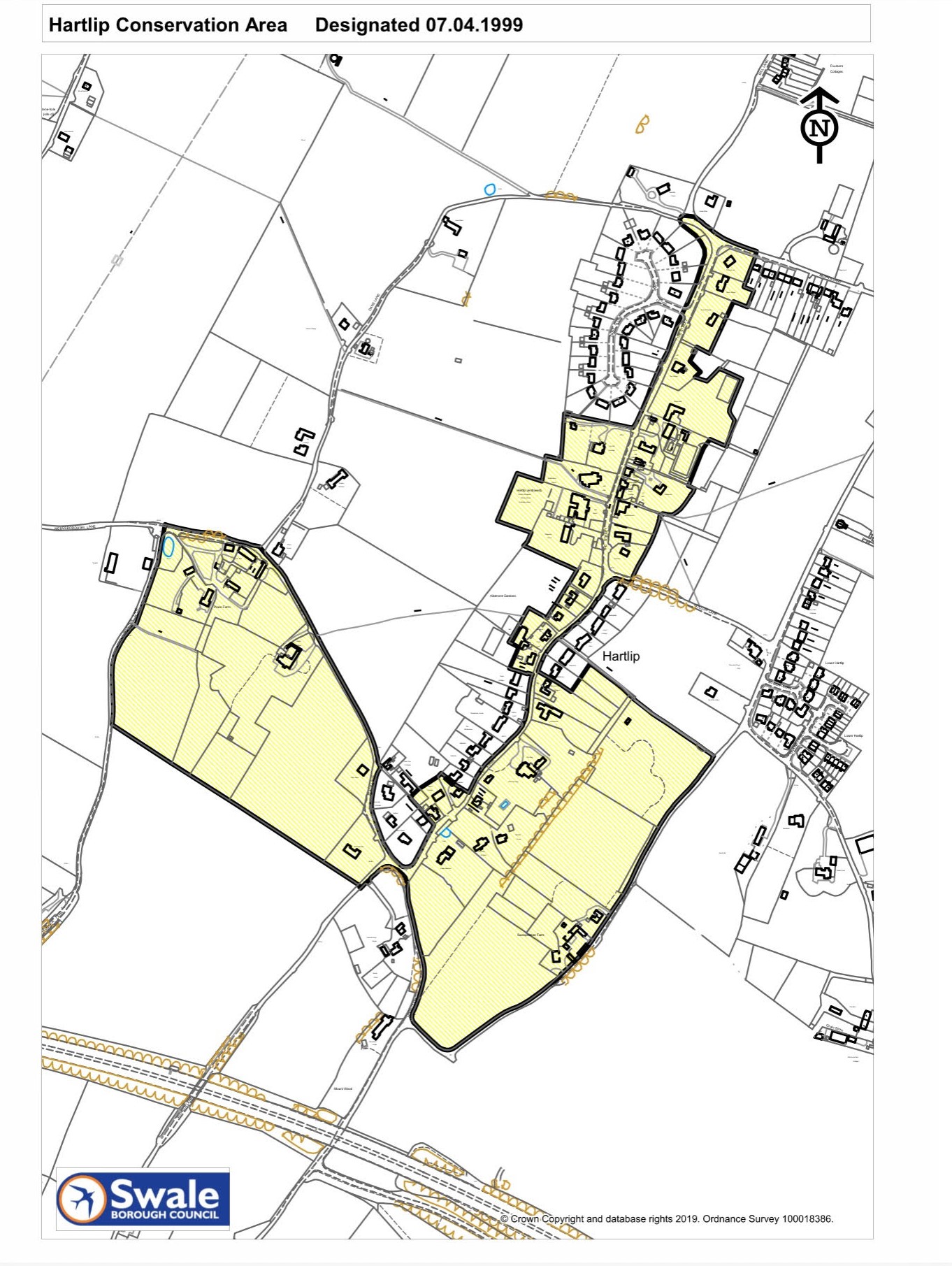Hartlip Conservation Area
The Hartlip Conservation Area Update
The Hartlip Conservation Area was recommended for adoption by the Policy and resources committee on 18th October.
You can view and download the current document at
https://swale.gov.uk/planning-and-regeneration/heritage-and-landscape/conservation-areas
As next steps, SBC are going to update the current document to take into account the responses received as part of the public consultation, will upload it on the SBC website and publish a press notification in a local newspaper and the London Gazette informing them of the re-designation and updated adoption of Hartlip Conservation Area. Once that exercise is complete, we will be sent a notification of the same.
What are Conservation & Article 4 Areas?
What is a Conservation Area?
Conservation Areas are important to the environmental quality of life in this country.
The statutory definition of a Conservation Area is ‘an area of special architectural or historic interest, the character or appearance of which should be preserved or enhanced’.
Hartlip’s Conservation Area was designated by KCC in 1970 with a review and extension in 1999 and a further review and extension in 2023.
Additional planning controls apply in Conservation Areas. Many residents feel that the limitations imposed are far outweighed by the public recognition that they live in a place of some special character where there is a duty placed on the Council (SBC) to preserve and enhance that character.
Conservation Area status gives additional planning protection from unsympathetic development or alterations which could otherwise spoil the special character of that area and possibly reduce the market value of properties.
The main effects of designation:
- The demolition of all buildings (with few minor exceptions) or any part of such buildings requires Conservation Area Consent from the Borough Council or, in some cases, DEFRA.
- Planning permission is required to change the exterior of buildings.
- The range of ‘permitted development rights’ is more limited. Permission is required for dormer windows and there are tighter controls over extensions, satellite dishes and outbuildings within gardens.
- Owners are required to give at least six weeks’ notice in writing to the Council (SBC) of any intention to fell or lop trees growing within the designated area.
- If the Council (SBC) feels that any proposed development requiring planning permission would affect the character or appearance of the conservation area, it has a duty to advertise the application and take into account any representations received,
- Any new development should preserve or enhance the character or appearance of the conservation area.
The setting of a Conservation Area may be enhanced by the landscape around them, within them and views to and from the area. In considering development proposals, strong regard will be given to the need to safeguard this setting.
Open spaces, gardens and gaps between existing buildings are often important elements of the streetscene and the overall character of a Conservation Area. Development that results in the loss or erosion of such spaces will not be permitted if it would be harmful to the character and appearance of a conservation area.
Hartlip’s Character Appraisal summarised its findings:
‘The old village remains clearly identifiable.
The green framework of native planting along The Street is a crucial feature of the village character, and helps to maintain a strong physical relationship with the surrounding countryside at a time when other links with it have weakened. The generous plot size is a special feature of the old village character and is crucial to the well-being of the green framework. The village character depends heavily on these green areas and the gaps are, therefore, of key importance; the spaces around the buildings are in some instances as important as the buildings themselves.’
The quality and interest of a Conservation Area is made up from the sum of all its parts. Modest buildings such as terraced houses and cottages can contribute to the character of the area. It follows that alterations to these buildings can therefore have considerable impact upon the appearance and quality of the conservation area. Repairs carried out in like materials using traditional methods have little or no effect but quite small changes, such as the replacement of timber sash windows with plastic or metal frame windows, can not only downgrade the appearance of the building and the conservation area, but can also actually devalue the property itself. The Council (SBC), therefore, asks property owners within conservation areas to think carefully before altering their buildings or undertaking repairs.
Advice is available.
Doing things the right way will be vital to help maintain the attractiveness of an area.
It can then continue to be appreciated by residents and visitors alike.
References:
SBC Planning and Development Guidelines: Conservation Areas
Hartlip Conservation Area: Character Appraisal
Hartlip Village Appraisal 1994
What is an Article 4 Direction?
A Council will sometimes remove some or all ‘permitted development rights’ by means of an Article 4 Direction.
This is a very significant designation and recognises the importance of protecting the area or building/s from harmful development.
The Parkland, Lower Hartlip Road is an Article 4 Area and has no permitted development rights in order to protect it now and into the future.
